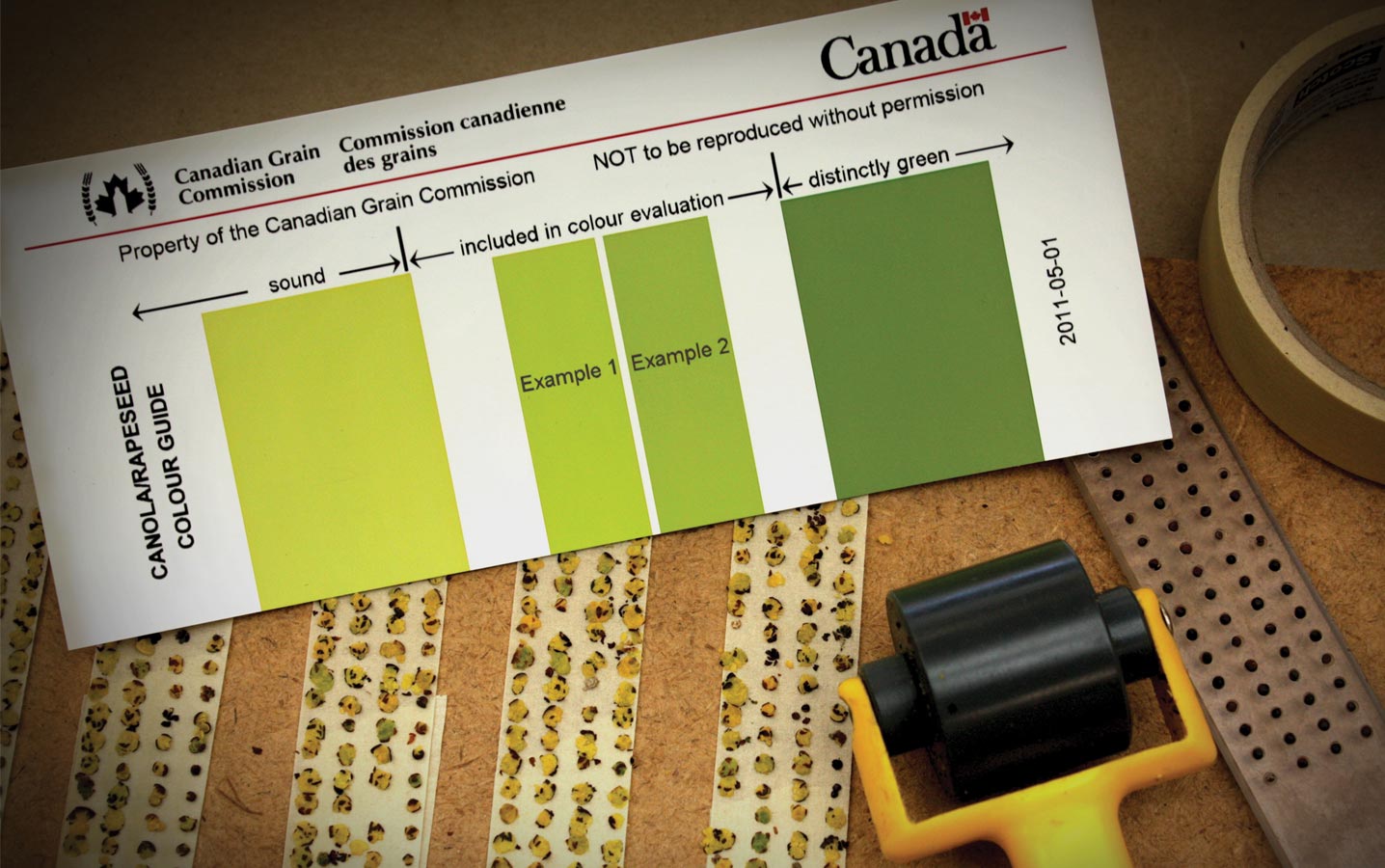Colour guides help farmers assess green or heated seed
This farm show season, farmers have the opportunity to get a free Canola/Rapeseed Colour Guide and Canola/Rapeseed Heated Colour Guide from the Canadian Grain Commission (CGC). The guides, similar to the ones used by grain elevators, provide farmers with an additional tool in assessing the quality of their canola.
Distinctly green seeds and heated seeds are two of the most common downgrading factors for canola. High levels of chlorophyll impact the colour and taste of canola oil – an undesirable trait to consumers. It is expensive and difficult for processors to remove. Heated seed produces a similar effect.
The CGC Canola/Rapeseed Colour Guide and Canola/Rapeseed Heated Colour Guide provide direction for the grain handling system when determining what constitutes distinctly green and heated or badly bin-burnt seed.
The distinctly green and heated tolerances for No. 1 canola are two per cent and 0.1 per cent, respectively. Grain inspectors clean the canola sample and then compare and assess the crushed sample (1,000 seeds) against the colour guide. Seeds which do not meet the definition of distinctly green or heated, but are tan (with the exception of those emitting an odour) or pale green are assessed against the degree of soundness of the sample but are not counted as distinctly green or heated.
Protection of the CGC-printed colour guides is critical to ensure the colours remain accurate. The colour guides come with instructions that explain the importance of storing the cards away from direct sunlight.
Farmers interested in receiving a guide can visit the CGC booth at 2016-17 trade shows or contact the Quality Assurance, Standards and Re-inspection unit at 1-800-853-6705 to have one mailed out.






